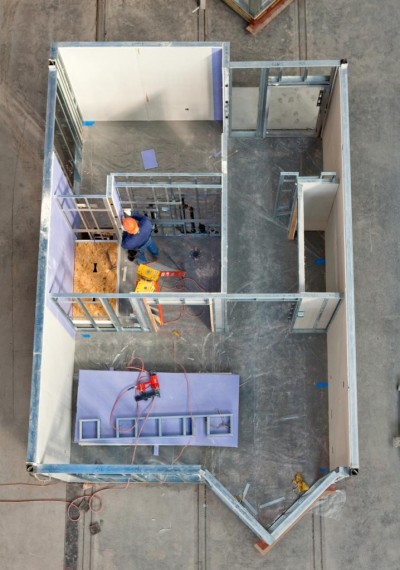The Epoch Times has published a feature focused on Modular Construction in New York
Tags: adApt NYC, Affordable Housing, Green Building, High Quality Construction, Micro-unit apartment, Mini-apartments, modular building, Modular Construction, My Micro NY, Non Combustible Construction, offsite construction, Prefabrication, sustainable construction
The buzz around Modular construction in New York just keep growing. We were happy to discuss our 18 years of NY modular construction history with the Epoch Times recently and we thought you might like to read the resulting article.
Modular Construction Takes Off in New York
Atlantic Yards prefabs aiming for a luxury look, My Micro NY set to begin this year in Kips Bay
By Catherine Yang, Epoch Times | February 1, 2014 Last Updated: January 31, 2014 10:19 am
NEW YORK—Modular building and prefabrication have been gaining attention in recent years, largely because of high-profile projects and micro-unit housing rolling out in major cities like New York and San Francisco.
Former Mayor Michael Bloomberg supported the modular concept with his adAPT NYC micro-housing competition last year, allowing for smaller than ever units to be built in the city. Construction of nARCHITECTS’ winning design for My Micro NY, at 335 East 27th St., in Kips Bay, will begin this year. Also, after 10 years in the works, the Atlantic Yards project in Brooklyn has finally started stacking modules.
Brooks McDaniel with SHoP Architects is project architect for the first modular residential tower at Atlantic Yards. “Since modular is so new to New York, we had to kind of reinvent the wheel,” said Brooks. “Once we got over the engineering hurdles it was like designing any other [project].”
Modular is hardly new, but the Atlantic Yards project is trying to create a luxury look using prefabricated modules.
The challenge was to not have “modular look like modular,” with this particular project, McDaniel said.
Catch-22
My Micro NY, with units a mere 325-square feet–previously a prohibited size for the city, will build units that are completely self-supporting. Capsys, the company prefabricating the modules, has been in the Brooklyn Navy Yard for 18 years.
There are obvious economic and sustainability benefits when it comes to building modular, but the reason modular hasn’t been more popular is a catch-22, said Tom O’Hara, a director at Capsys, who has been working with modular building for 30 years.
Conventional construction is a “design-bid-build” product whereas modular is a “design-build” product, so the developer really needs to be planning for modular from the very beginning. The catch is that there aren’t many modular designer-builders to begin with.
“If you put out a plan to build modularly, there aren’t a lot of people who can respond,” O’Hara said. “And so developers worry about whether they’re getting a competitive price.”
Still, much of Capsys’s work includes educating architects and developers on the capabilities of modular construction, which O’Hara said they are very receptive to.
Height Limitations
Height poses another perceived challenge. Atlantic Yards’ B2, its first residential tower of a planned 15, is set to be the world’s tallest modular structure at 32 stories, but is not free standing. The misconception is that above a certain height, the developer no longer saves money by using prefabrication.
“It’s not a cost issue, it’s an engineering issue,” O’Hara said.
Modular factories are built to produce a very specific product. Capsys, for instance, designed its factory to be cost competitive in delivering buildings up to 13 feet.
“And we could very easily have done a different system for a different type of modular,” O’Hara said. “We’ve built everything from two story townhouses to ten story buildings. But there are still some parameters there that we’ve designed into our system.”
Speedy Timeline
For some projects, there are very compelling reasons to go modular—for some, there just aren’t.
Construction quality and LEED certification are the basics, O’Hara said, but one example of an added bonus is timeline.
Prefabrication saves time and, more importantly, is able to deliver exactly on a specific opening date, which could be crucial to buildings like student dormitories or event housing.
With My Micro NY, for instance, fabrication will start about the same time the general contractor breaks ground. The first module will take about two weeks to go through the assembly line, O’Hara said, and after that one or two modules will come off the line every day.
“The project is around 60 modules so it really only takes a few weeks to build them all,” O’Hara said. “We’ll probably be able to build the modules faster than they can build the foundation.”
http://www.theepochtimes.com/n3/481474-modular-construction-takes-off-in-new-york/

